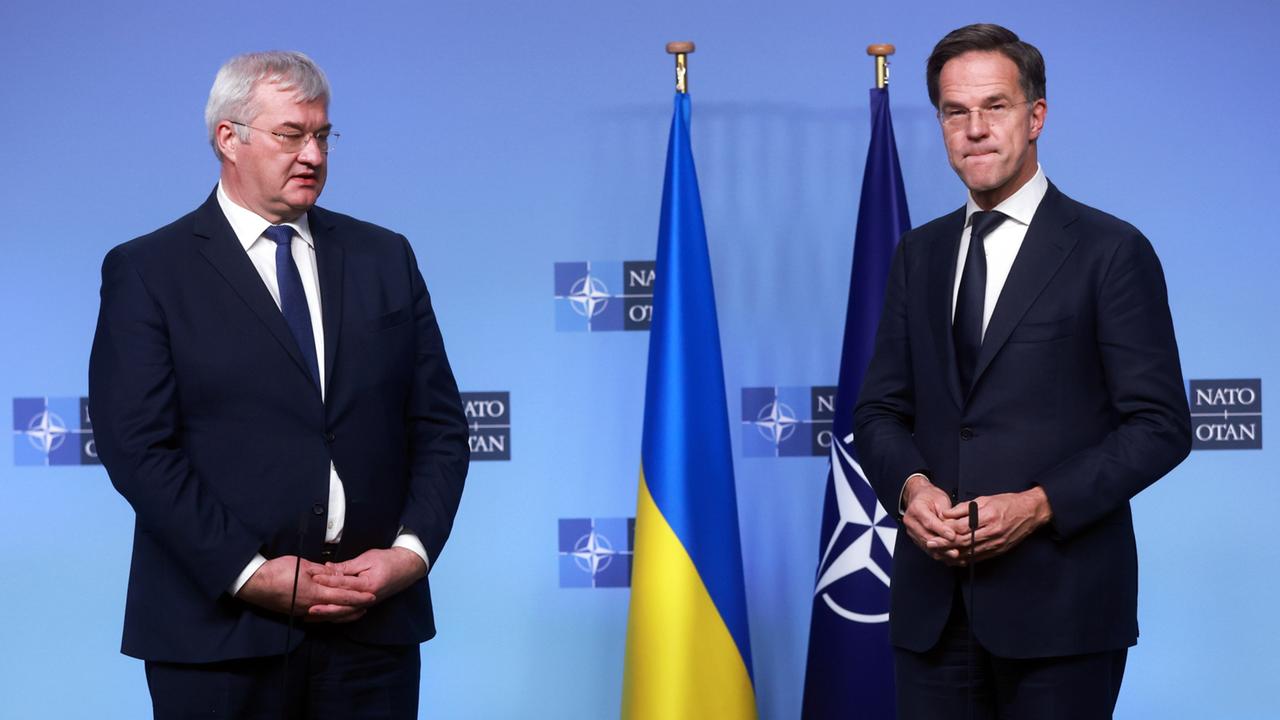At the first NATO foreign ministers' meeting under his leadership, alliance leader Rutte tried to set a new tone. But he had nothing more to offer Ukraine than flowery words. And he rejected German ideas.
It took a while for all 32 NATO foreign ministers to stand at attention for the final photo. Hands were shaken. Lithuania and Sweden briefly embraced each other – who knows when we will see each other again. It was definitely the last meeting for the American Anthony Blinken. Germany and Great Britain came at the last minute and were greeted with applause – like on a school trip when the latecomers finally made it onto the bus.
At the end of the meeting the mood was good, better than the situation. Because after two days of conferences, speeches and background information, the impression remained: The world “is on fire” – or as NATO Secretary General Mark Rutte put it: “The growing alliance between Russia, China, North Korea and Iran illuminates the global nature of the dangers that we face.”
“Russia's illegal war threatens us all”
Russia supplies North Korea with missiles, supports its nuclear program and thus also threatens the USA. “Russia's illegal war against Ukraine threatens us all,” said the NATO chief at the end of the meeting. A message to Washington that the Ukraine war is not just a European affair.
Rutte chaired the foreign ministers' meeting of the 32 member countries for the first time. The Dutchman set a new tone compared to his predecessor Jens Stoltenberg. Rutte managed to deliver even bad news as if he were handing over a bouquet of tulips.
An example of this was Ukraine's desired rapid NATO membership: “There is already a bridge towards NATO, but now we have to ensure that Ukraine can negotiate with the Russians from a position of strength.”
Baerbock suggests international presence in Ukraine
At the meeting there was unusually often talk of negotiations that should lead to peace. Germany's Foreign Minister Annalena Baerbock named the building blocks of such an agreement: “Political and material security guarantees, NATO membership, an international presence to secure a ceasefire, troop withdrawal, territorial issues, reconstruction, and dealing with sanctions.”
But there was a small rebuke from the NATO chief. He said in his closing statement that he didn't want to add his own thoughts to the many thoughts that are currently in the air. This means that European peacekeepers with German participation will probably remain just a mental game for the time being.
But negotiations are out of the bottle and pressure on Ukraine will increase, especially from the new US administration. But what exactly Donald Trump plans to do with Ukraine is still unclear.
More money for defense
However, it is clear that the member states will have to spend more money on their defense in the future. The NATO chief also pointed this out to her in a friendly but firm manner. And it's not just about military deterrence.
The alliance is also in danger internally. The threats range from destroyed data cables, false information, blackmail to the instrumentalization of refugees. NATO relies on prevention, on training, but also on cooperation with the secret services.
The United States is once again playing an important role. The Europeans are reaching out overseas: Mark Rutte has already visited Florida and French President Emmanuel Macron has invited future US President Donald Trump to the opening of Notre Dame Cathedral at the weekend, as well as Ukrainian President Volodymyr Zelensky.





